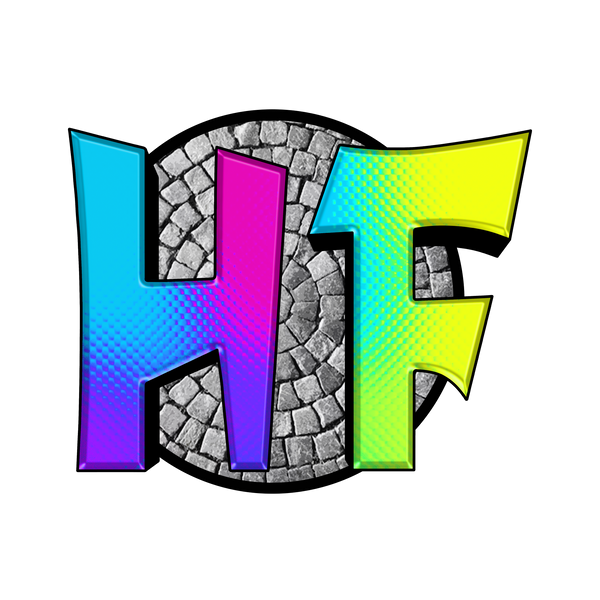FlatForge Plugin: It's HueForge, but Flat
Requires HueForge 0.9.2 or Later to work

What is FlatForge
Print Flat, Textured, and Double Sided
Unlock the full power of your printer and HueForge. The filament blending you love, but smooth to the touch. (FlatForge requires HueForge Software to function)
Some Applications Require Flat Prints
Things like bookmarks, coasters, and keychains all benefit from printing flat. Print plate holographic effects only work on flat faces..
Automatic Filament Changing is an Opportunity
HueForge minimizes waste and maximizes supported printers by using only layer swaps.
But lots of people have solutions for automatic filament management and they want to use it. FlatForge allows just this. The print time and waste go up, but it can be worth the cost.
Full HueForge Integration
-

-
Easy to Install
How To: FlatForgeInstalling a Plugin is simple. Just download the zip file and then tell HueForge where it is and it will install for you.
Easy To Use
-
Simple to Create and Slice
Make your HueForge as normal, then go to Plugins->FlatForge and quickly set your options and output.
FlatForge creates a group of STL files with helpful names. Select them all and drop them into your Slicer as a Multipart Model. Then assign Filaments based on the model names and slice.
Double-Sided Print
Why a Plugin
HueForge Has Two Goals
- Minimal Waste
- Maximum Printer Compatibility
To achieve this, HueForge only uses layer swaps. This still produces excellent images, but they must have a texture. So processes that require multiple swaps per layer become Plugins.
FlatForge Requires Automatic Filament Swapping
Even a simple FlatForge model will take 30+ filament swaps before it is over, no one wants to do this by hand. This will increase print time as well as filament waste. Using a tool-changer like a Voron Stealthchanger/TapChanger, the SnapMaker U1 (Affilliate), or PrusaXL (Affiliate) will reduce this waste and print time (and the upcoming Vortek system will reduce waste) but they all cost quite a bit and aren't required for FlatForge.
You can print with FlatForge with whatever filament management system you have now.
Frequently Asked Questions
Does This Mean I Can Use Multiple Colors Per Layer in HueForge?
No. This is a post process to a HueForge model, not a new way to make HueForge models.
That being said, multiple levels of the same color are less of an issue with this method because they will all end up on the flat surface together and not be as noticeable so it can make some images easier to create.
Why Do FlatForge Prints Take Longer?
On a normal HueForge print, each layer is smaller than the one below it. In FlatForge this is not true. Every layer is the exact same size.
FlatForge not only fills in all the layers of an existing HueForge print but it also requires frequent swapping of filaments.
On a Toolchanger this will add minimal time, but on an AMS system will cause much longer delays as spooling and unspooling filament is slow as well as purging the old filament from the nozzle adding waste and time. Still, it is much easier to add extra colors to an AMS system.
Why Do I Need a Transparent Layer?
HueForge Prints use very low layer heights for blending. The default is 0.08mm but layer heights as low as 0.02mm can be used on 0.4mm nozzles to increase blending and image fidelity.
When flipping a HueForge over to place the image on the bed, you would need to print a first layer at those same layer heights which is very difficult. A single transparent layer at a normal first layer height of 0.16-0.2mm is much easier to get right and also slices faster.
Do I Need a Smooth Plate?
Not at all. Smooth or Holo plates create nice textures for face-down FlatForge prints, but they are not necessary. With the transparent first layer for face down, you can print on nearly any surface.
If you don't want the bed surface involved, you can also print face up and get the standard imprint on the back.
Why Do They Take Longer to Slice?
While smaller models don't add much to slice time, larger models or models with many layers add a lot of slicing time because there are many more triangles involved with the oddly shaped models generated for each Color Slider in the print.
Larger prints may require extreme amounts of memory just to slice. Be aware of these limitations when attempting FlatForge. It is recommended to start with smaller prints.
How Much is FlatForge?
FlatForge has a list price of $20 but an introductory price of $15 for October and November of 2025.
This is a one time fee and will not be repeated. All updates are included in this price with no expiration date.
It is possible that a future version may not be compatible with an older version of HueForge, but you will never lose access to the newest version of FlatForge.
Is This All the FlatForge Does?
No.
FlatForge will add a KeyChain maker tool in the next month or so. Other features may be added.
It is also possible to use FlatForge with other plugins.

